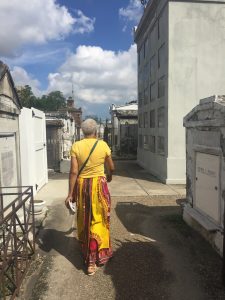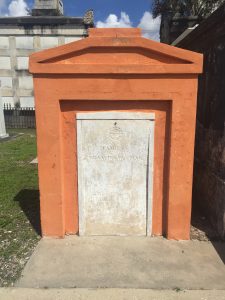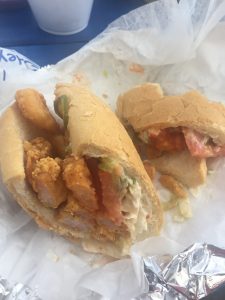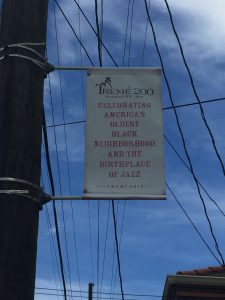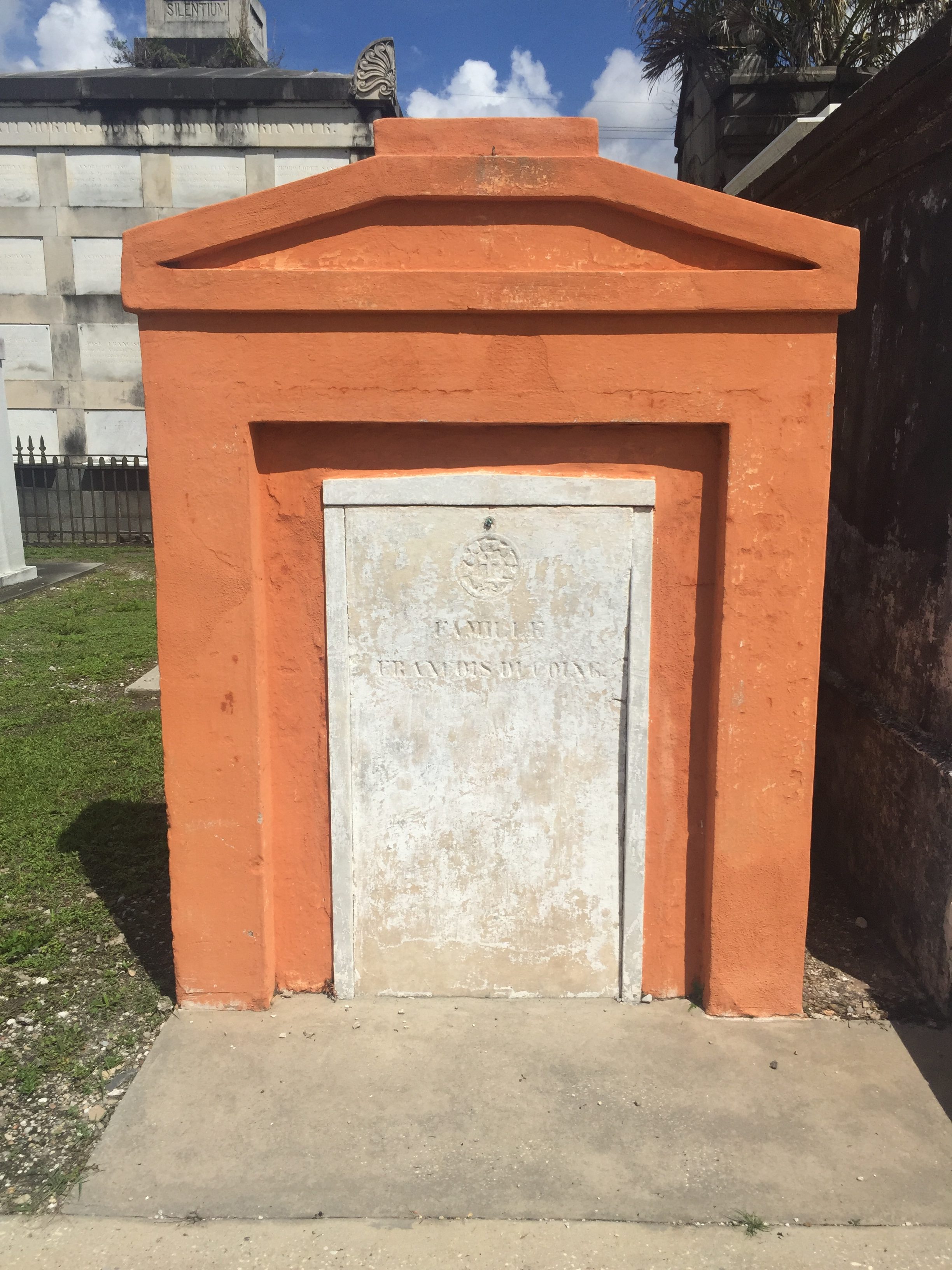In my last blog post, I spoke about studying different methods of preservation. I spoke about religious preservation, and the relationship between Christianity and Black Americans. Since then, I’ve been scheduling interviews, conducting them, attending Catholic mass for the first time, dancing, eating, and facing off with cockroaches. My favorite interviews have been with 1) Denise Augustine, a culture keeper who leads tours in the Church owned cemeteries through her company Our Sacred Stories 2) Amanda Walker and Heather Veneziano, the director and volunteer coordinator for Save Our Cemeteries, and 3) Dr. Emilie Leumas, director and archivist at the Office of Archives and Records for the Archdiocese of New Orleans. Denise was concerned with her own personal history and the preservation of her culture, the ladies at Save Our Cemetery with the restoration and advocacy for New Orleans’ cemeteries (city owned and church owned). Dr. Leumas was able to actually take me through archives and provide me with a view of history found solely in Catholic church records.
This opened new doors for my research. During the colonial period before the Louisiana Purchase, the law required the people of New Orleans to be Catholic. This included enslaved peoples, free people of color, as well as the white population. Colonization and slavery forced people to give up their traditional religious practices. One of these religions is Voodoo, which continues to flourish in Louisiana. I discussed this process with Denise Augustine of Our Sacred Stories this month:
“And so what we did is we took our Voodoo Loa, we superimposed them on top of Catholic saints and kept on practicing. For instance, there’s a Voodoo Loa called Legba. You cannot talk to anyone else in the pant yard until the road opener opens the way. So we put Legba on top of St. Peter because St. Peter holds the keys. He must can open a way. And so this is how voodoo flourishes: because we use both religions simultaneously to serve one purpose.”
This superimposition was a way of preserving the culture that slave masters and the ruling class tried to erase completely. The people molded Catholicism to fit their needs. Catholicism had a strong presence in my day to day interactions in New Orleans. The Catholic church owns the cemeteries where Denise tours. Thus the Archdiocese of New Orleans must approve all outside interactions (including filming). They also play an integral role in cultural preservation through the Office of Archives and Records.
The Catholic church is the only institution in New Orleans that has existed since the city’s founding 300 years ago. They record the baptisms, weddings, and funerals of their members. This allows archivists to trace even the enslaved people throughout time. This is a remarkable feat which I had the opportunity to discuss with the Director of the Office of Archives and Records, Dr. Emilie Leumas:
“By law, people and babies were baptized, and in our records, they give then who the mother is or who the owner is if it’s an enslaved person. They will give you information about if the father acknowledges a child, they’ll give you that information. We have that with baptisms, marriages, and funerals as well. So people that have African-American roots from Louisiana, the church records are the most important because oftentimes—besides slaves and slave sale records of being able to trace that lineage, and that’s often difficult because you’re watching human beings being sold from one person to another. That’s really difficult.”
People warned me going into this period of production that none of my planning would actually matter when it came down to it, and that was definitely the case. Right now, I’m working on watching my footage, transcribing my interviews, and trying not to miss New Orleans too much.
